- 1 Chapter 9: Standard costing and basic variances
- 2 145.80 hoursStandard time for the first 8 units:145.80 hours × 8 units = 1,166.40 hoursLabour idle time and material wasteIdle timeIdle time occurs when employees are paid for time when they are notworking e.g. due to machine breakdown, low demand or stockouts. If idle time exists an idle time labour variance should be calculated.3 Controlling Idle timeIdle time can be prevented or reduced considerably by :1. Proper maintenance of tools & machinery2. Advanced production planning3. Timely procurement of stores4. Assurance of supply of power5. Advance planning for machine utilisation Test your understanding 15ZS has a standard time of 0.5 hours per unit, at a cost of $5 perhour. It expects there to be non-productive time equal to 5% of hourspaid. The following details relate to the month of December:Required:Calculate the overall labour efficiency variance and analyse it between productive efficiency and excess idle time variances. Test your understanding 16 - Additional idle time exampleThe following data relates to T plc for the month of January:Required:Calculate the labour efficiency variance and analyse it between productive efficiency and idle time.Material wasteMaterial waste may also be a normal part of a process and could be caused by:evaporationscrappingtestingWaste would affect the material usage variance. The calculation will be reviewed in the next chapter.Standard costing and activity-based costing (ABC)As seen in chapter 1, ABC is a method of allocating overhead costs to products using cost drivers.Standard costs can be compared to actuals and an overhead expenditure and efficiency variance calculated.Where materials are not properly controlled, excess stock of someitems are likely to occur with a result unnecessary tying up of capitaland loss through deterioration and obsolescence. Shortages of othermaterials may arise at the time when they are urgently needed, andproduction will then be delayed.The purchasing of materials is a highly specialised function, that can control waste by : (1) Ordering the right quantity and quality of materials at the most favourable price;(2) Ensuring the material arrives at the right time in the production process;(3) Take active measures against theft, deterioration, breakage and additional storage costs.Standard costing and activity-based costing (ABC)As seen in chapter 1, ABC is a method of allocating overhead costs to products using cost drivers.Standard costs can be compared to actuals and an overhead expenditure and efficiency variance calculated. Illustration 3 – ABC variancesThe following information relates to H Company's ordering activity for the period:RequiredCalculate the overhead expenditure variance and the overheadefficiency variance for the ordering activity and comment briefly on themeaning of each variance.SolutionVariable overhead expenditure varianceVariable overhead efficiency varianceVariance = 600 F orders × standard cost of $45 per order = $27,000 FEach unit used less than 0.2 orders, resulting in a favourable variance. ABC Variances - SolutionVariable overhead expenditure varianceVariable overhead efficiency varianceVariance = 600 F orders × standard cost of $45 per order = $27,000 FEach unit used less than 0.2 orders, resulting in a favourable variance. Test your understanding 17 - ABC variancesThe following information is also available for H Company's delivery activity for the period:Required:Calculate the overhead expenditure variance and the overheadefficiency variance for the delivery activity and comment briefly on themeaning of each variance.When should a variance be investigated?Factors to consider include:SizeA standard is an average expected cost and therefore smallvariations between the actual and the standard are bound to occur. Theseare uncontrollable variances and should not be investigated.In addition, a business may decide to only investigate variances above a certain amount. The following techniques could be used:Fixed size of variance, e.g. investigate all variances over $5,000Fixed percentage rule, e.g. investigate all variances over 10% of the budgetStatistical decision rule, e.g. investigate all variances of which there is a likelihood of less than 5% that it could have arisen randomly.Favourable or adverseFirms often treat adverse variances as more important thanfavourable and therefore any investigation may concentrate on theseadverse variances.CostFor investigation to be worthwhile, the cost of investigation mustbe less than the benefits of correcting the cause of the variance.Past patternVariances should be monitored for a number of periods in order toidentify any trends in the variances. A firm would focus itsinvestigation on any steadily worsening trends.The budgetThe budget may be unreliable or unrealistic. Therefore, thevariances would be uncontrollable and call for a change in the budget oran improvement in the budgeting process, not an investigation of thevariance.Reliability of figuresThe system for measuring and recording the figures may beunreliable. If this is the case, the variances will be meaningless andshould not be investigated. Methods used when investigating variancesA process has a standard time of 50 minutes. Control limits may beset as a fixed amount, a fixed percentage or using a statistical model.Assume they are set at a fixed amount 30 and 70 minutes, and actualtimes recorded as follows: If the actual time taken falls within the bands, the variance is not significant.Control limits should be set so that there is only a small chance of a random fluctuation falling outside them.In this example the control limits are set two standard deviations from the mean. This means that 95% of the recorded process times should lie within the control limits.The actual time is recorded on the chart after the completion of each process. It will soon be apparent if the mean time is shifting from 50 minutes, as the recorded times move outside the control limits.If more than 5% of the observed results do lie outside the control limits, then the system may be referred to as being statistically out of control. At this stage management must decide what further action to take.4 Chapter summaryTest your understanding answers Test your understanding 1DA bank and a food manufacturer would have similar repetitive outputfor which standard costs could be calculated whereas a kitchen designeris likely to work on different jobs specified by the customer. Test your understanding 2(a)(b) Test your understanding 3 Test your understanding 4 Test your understanding 5The total material expenditure for the organisation will bedependent partly on the prices negotiated by the purchasing manager andpartly by the requirements and performance of the production department.If it is included as a target for performance appraisal the manager maybe tempted to purchase cheaper material which may have an adverseeffect elsewhere in the organisation.The requirement to introduce safety measures may be imposed but themanager should be able to ensure that implementation meets budgettargets.A notional rental cost is outside the control of the manager andshould not be included in a target for performance appraisal purposes. Test your understanding 6The production manager will be responsible for managing direct labour and direct material usage.However, the manager may not be able to influence:the cost of the materialthe quality of the materialthe cost of labourthe quality of labour Performance should be measured against the element of direct cost which the manager can control. Test your understanding 7 - Sales variances(a) (b) The sales price variance is the same undermarginal costing, but the sales volume variance is calculated using thestandard contribution per unit. Here, standard contribution = $60 - ($25+$8+ $4) = $23.Sales volume varianceAlternative calculation :Variance = 500 A units × standard contribution of $23 per unit = $11,500 A Test your understanding 8 - Materials variances Test your understanding 9 - Labour variances Test your understanding 10 - Variable overhead variances Test your understanding 11 - Fixed overhead variances(a) FOAR = $22,960 ÷ (6,560 units × 2 hours per unit)
|
Chapter 9: Standard costing and basic variances
Chapter learning objectives
Upon completion of this chapter you will be able to:
- explain the purpose and principles of standard costing
- describe the methods used to derive standard costs
- prepare standards that allow for idle time and waste
- explain how standard costs may be used to flex a budget
- explain and apply the principle of controllability
- calculate the following variances and explain their possible causes:
- sales price and volume
- materials total, price and usage
- labour total, rate and efficiency
- variable overhead total, expenditure and efficiency
- fixed overhead total, expenditure, volume, capacity and efficiency
- produce an operating statement to reconcile budgeted and actual profit under standard absorption costing
- produce an operating statement to reconcile budgeted and actual profit or contribution under standard marginal costing
- explain how the learning curve will affect labour variances
- explain the major causes of idle time and waste, suggest methods for their control and calculate their effect on variances
- calculate simple activity-based costing (ABC) variances
- explain whether or not to investigate the cause of a variance.

Standard costing and the basics of variance analysis were encountered in F2. In F5 you will have to cope with the following:
- new variances
- more complex calculations
- discussion of the results and implications of your calculations.
 Standard costing
Standard costing
What is standard costing?
A standard cost for a product or service is a predetermined unit cost set under specified working conditions.
The uses of standard costs
The main purposes of standard costs are:
- control: the standard cost can be compared to the actual costs and any differences investigated.
- performance measurement: any differences between the standard and the actual cost can be used as a basis for assessing the performance of cost centre managers.
- to value inventories: an alternative to methods such as LIFO and FIFO.
- to simplify accounting: there is only one cost, the standard.
Suitability of standard costing
Standard costing is most suited to organisations with:
- mass production of homogenous products
- repetitive assembly work
The large scale repetition of production allows the average usage of resources to be determined.
Standard costing is less suited to organisations that producenon-homogenous products or where the level of human intervention ishigh.

 McDonaldisation
McDonaldisation
Restaurants traditionally found it difficult to apply standardcosting because each dish is slightly different to the last and there isa high level of human intervention.
McDonalds attempted to overcome these problems by:
- Making each type of product produced identical. For example, each Big Mac contains a pre-measured amount of sauce and two gherkins. This is the standard in all restaurants.
- Reducing the amount of human intervention. For example, staff do not pour the drinks themselves but use machines which dispense the same volume of drink each time.


 Test your understanding 1
Test your understanding 1
Which of the following organisations may use standard costing?
(i)a bank
(ii) a kitchen designer
(iii)a food manufacturer
(a) (i), (ii) and (iii)
(b) (i) and (ii) only
(c) (ii) and (iii) only
(d) (i) and (iii) only

Preparing standard costs
A standard cost is based on the expected price and usage of material, labour and overheads.

 Test your understanding 2
Test your understanding 2
K Ltd makes two products. Information regarding one of those products is given below:
Budgeted output/ sales for the year: 900 units
Standard details for one unit

Note: Variable overheads are recovered (absorbed) using hours, fixed overheads are recovered on a unit basis.
Required:
(a) Prepare a standard cost card for one unit and enter on the standard cost card the following subtotals:
(i)Prime cost
(ii) Variable production cost
(iii)Total production cost
(iv)Total cost.
(b) Calculate the selling price per unit allowing for a profit of 25% of the selling price.

Types of standard
There are four main types of standard:
Attainable standards
- They are based upon efficient (but not perfect) operating conditions.
- The standard will include allowances for normal material losses, realistic allowances for fatigue, machine breakdowns, etc.
- These are the most frequently encountered type of standard.
- These standards may motivate employees to work harder since they provide a realistic but challenging target.
Basic standards
- These are long-term standards which remain unchanged over a period of years.
- Their sole use is to show trends over time for such items as material prices, labour rates and efficiency and the effect of changing methods.
- They cannot be used to highlight current efficiency.
- These standards may demotivate employees if, over time, they become too easy to achieve and, as a result, employees may feel bored and unchallenged.
Current standards
- These are standards based on current working conditions.
- They are useful when current conditions are abnormal and any other standard would provide meaningless information.
- The disadvantage is that they do not attempt to motivate employees to improve upon current working conditions and, as a result, employees may feel unchallenged.
Ideal standards
- These are based upon perfect operating conditions.
- This means that there is no wastage or scrap, no breakdowns, no stoppages or idle time; in short, no inefficiencies.
- In their search for perfect quality, Japanese companies use ideal standards for pinpointing areas where close examination may result in large cost savings.
- Ideal standards may have an adverse motivational impact since employees may feel that the standard is impossible to achieve.
Preparing standard costs which allow for idle time and waste
Attainable standards are set at levels which include an allowance for:
- Idle time, i.e. employees are paid for time when they are not working.
- Waste, i.e. of materials.

 Test your understanding 3
Test your understanding 3
The fastest time in which a batch of 20 ‘spicy meat special'sandwiches has been made was 32 minutes, with no hold-ups. However, workstudies have shown that, on average, about 8% of the sandwich makers'time is non-productive and that, in addition to this, setup time(gettingingredients together etc.), is 2 minutes.
If the sandwich-makers are paid $4.50 per hour, what is the attainable standard labour cost of one sandwich?

Flexible budgeting
Before introducing the concept of flexible budgeting it is important to understand the following terms:
- Fixed budget: this is prepared before the beginning of a budget period for a single level of activity.
- Flexible budget: this is also prepared before the beginning of a budget period. It is prepared for a number of levels of activity and requires the analysis of costs between fixed and variable elements.
- Flexed budget: this is prepared at the end of the budget period. It provides a more meaningful estimate of costs and revenues and is based on the actual level of output.
Budgetary control compares actual results against expected results. The difference between the two is called a variance.
The actual results may be better (favourable variance) or worse (adverse variance) than expected.
It can be useful to present these figures in a flexible budget statement. (Note: This is not the same as a flexible budget).

 Test your understanding 4
Test your understanding 4
A business has prepared the following standard cost card based on producing and selling 10,000 units per month:
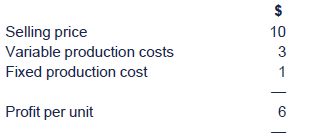
Actual production and sales for month 1 were 12,000 units and this resulted in the following:
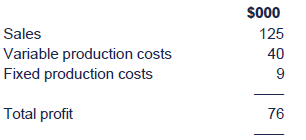
Required:
Using a flexible budgeting approach, prepare a table showing theoriginal fixed budget, the flexed budget, the actual results and thetotal meaningful variances.

 Controllability and performance management
Controllability and performance management
A cost is controllable if a manager is responsible for it being incurred or is able to authorise the expenditure.
A manager should only be evaluated on the costs over which they have control.

 Test your understanding 5
Test your understanding 5
The materials purchasing manager is assessed on:
- total material expenditure for the organisation
- the cost of introducing safety measures, regarding the standard and the quality of materials, in accordance with revised government legislation
- a notional rental cost, allocated by head office, for the material storage area.
Required:
Discuss whether these costs are controllable by the manager and if they should be used to appraise the manager.


 Test your understanding 6
Test your understanding 6
Explain whether a production manager should be accountable for direct labour and direct materials cost variances.

1 Revision of basic variance analysis
Variance analysis is the process by which the total difference between standard and actual results is analysed.
A number of basic variances can be calculated. If the results arebetter than expected, the variance is favourable (F). If the results areworse than expected, the variance is adverse (A).
It is important to be able to:
- calculate the variance
- explain the meaning of the variance calculated
- identify possible causes for each variance.
Once the variances have been calculated, an operating statement canbe prepared reconciling actual profit to budgeted profit, undermarginal costing or under absorption costing principles.
Basic variances can be calculated for sales, material, labour,variable overheads and fixed overheads. Each of these will be reviewedin turn.
Sales variances
Calculation
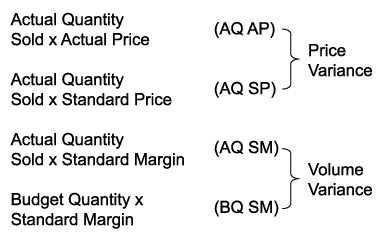
Note: 'Margin' = contribution per unit (marginal costing) or profit per unit (absorption costing).

 Test your understanding 7 - Sales variances
Test your understanding 7 - Sales variances
W Ltd has budgeted sales of 6,500 units but actually sold only 6,000 units. Its standard cost card is as follows:
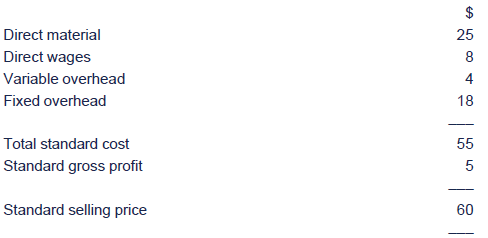
The actual selling price for the period was $61.
Required:
Calculate the sales price and sales volume variance for the period:
(a) Using absorption costing
(b) Using marginal costing

Causes of sales variances
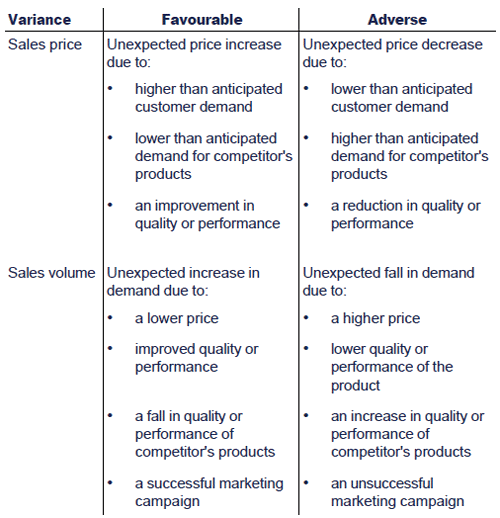
Note: The sales price and volume variance may be linked. Forexample, an increase in the price of a product will result in afavourable sales price variance but may also result in an adverse salesvolume variance, due to a fall in demand.
 Materials variances
Materials variances
Calculation


 Test your understanding 8 - Materials variances
Test your understanding 8 - Materials variances
James Marshall Co makes a single product with the following budgeted material costs per unit:
2 kg of material A at $10/kg
Actual details:
Output 1,000 units
Material purchased and used 2,200 kg
Material cost $20,900
Calculate material price and usage variances.

Causes of material variances

Note: The material price variance and the material usagevariance may be linked. For example, the purchase of poorer qualitymaterials may result in a favourable price variance but an adverse usagevariance.
Labour variances
Calculation
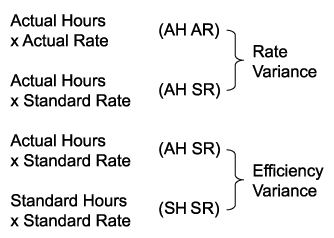

 Test your understanding 9 - Labour variances
Test your understanding 9 - Labour variances
Extract from the standard cost card for K Ltd

Actual direct wages for the period were:
15,500 hours costing $69,750 in total
Actual units produced 1,000
Calculate the labour rate and labour efficiency variances.

Causes of labour variances

Note: The labour rate variance and the labour efficiencyvariance may be linked. For example, employing more highly skilledlabour may result in an adverse rate variance but a favourableefficiency variance.
Variable overhead variances
Calculation


 Test your understanding 10 - Variable overhead variances
Test your understanding 10 - Variable overhead variances
Extract from the standard cost card for K Ltd

Calculate the variable overhead expenditure and variable overhead efficiency variances.

Causes of variable overhead variances
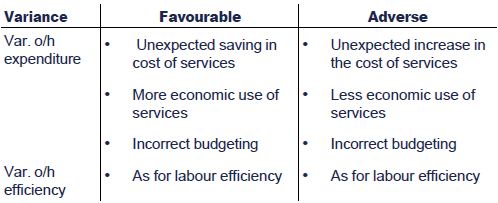
Fixed overhead variances
Marginal costing system
With a marginal costing profit and loss, no overheads are absorbed,the amount spent is simply written off to the income statement.
So with marginal costing the only fixed overhead variance is thedifference between what was budgeted to be spent and what was actuallyspent, i.e. the fixed overhead expenditure variance.
Absorption costing system
Under absorption costing we use an overhead absorption rate toabsorb overheads. Variances will occur if this absorption rate isincorrect (just as we will get over/under-absorption).
So with absorption costing we calculate the fixed overheadexpenditure variance and the fixed overhead volume variance (this can besplit into a capacity and efficiency variance).
Calculation
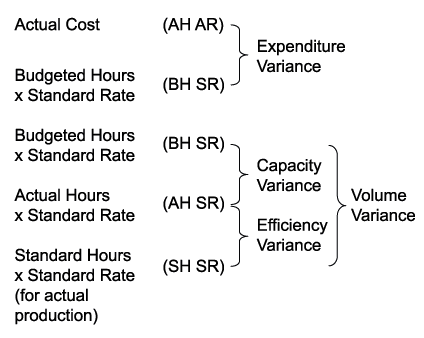

 Test your understanding 11 - Fixed overhead variances
Test your understanding 11 - Fixed overhead variances
The following information is available for J Ltd for Period 4:
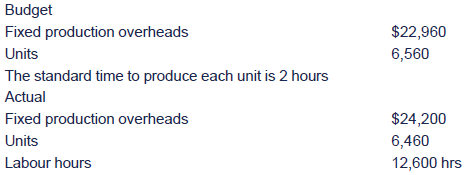
Required:
If J Ltd uses an absorption costing system, calculate the following:
(a) FOAR per labour hour
(b) Fixed overhead expenditure variance
(c) Fixed overhead capacity variance
(d) Fixed overhead efficiency variance
(e) Fixed overhead volume variance

Causes of fixed overhead variances

Operating statement under absorption costing
The purpose of calculating variances is to identify the differenteffects of each item of cost/income on profit compared to the expectedprofit. These variances are summarised in a reconciliation statement oroperating statement.

 Illustration 1 – Operating statement under absorption costing
Illustration 1 – Operating statement under absorption costing
Proforma operating statement under absorption costing (AC)

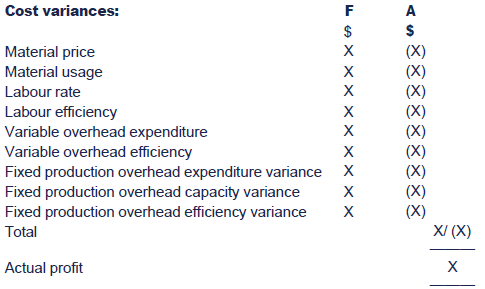


 Test your understanding 12 - AC operating statement
Test your understanding 12 - AC operating statement
Riki Ltd, produces and sells one product only. The standard cost and price for one unit being as follows:

The fixed production overhead included in the standard cost isbased on an expected monthly output of 750 units. Riki Ltd use anabsorption costing system.
During April the actual results were as follows:
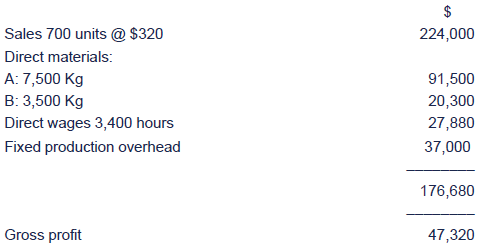
Note: Riki Ltd does not hold any inventories.
Required:
You are required to reconcile budgeted profit with actual profit for the period, calculating the following variances:
Selling price, sales volume, material price, material usage, labourrate, labour efficiency, fixed overhead expenditure and fixed overheadvolume.

Operating statement under marginal costing
The operating statement under marginal costing is the same as that under absorption costing except;
- a sales volume contribution variance is included instead of a sales volume profit variance
- the only fixed overhead variance is the expenditure variances
- the reconciliation is from budgeted to actual contribution then fixed overheads are deducted to arrive at a profit.

 Illustration 2 – Operating statement under marginal costing
Illustration 2 – Operating statement under marginal costing
Proforma operating statement under marginal costing (MC)
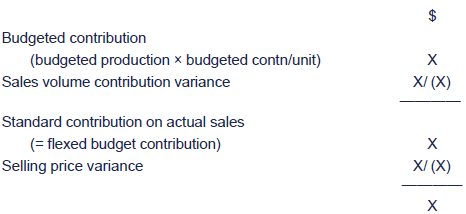
Variable cost variances:
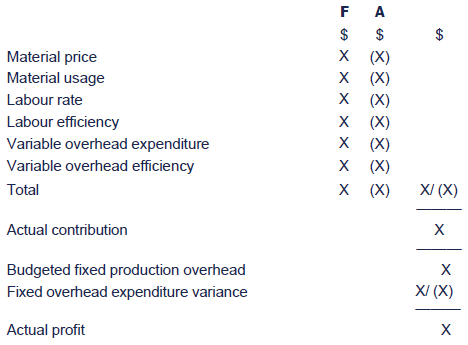


 Test your understanding 13 - MC operating statement
Test your understanding 13 - MC operating statement
Chapel Ltd manufactures a chemical protective called Rustnot. Thefollowing standard costs apply for the production of 100 cylinders:

The monthly production/sales budget is 10,000 cylinders.
Selling price = $6 per cylinder.
For the month of November the following production and sales information is available:

Required:
You are required to prepare an operating statement in a marginal costing format for November detailing all the variances.

2 Further aspects of variances
The learning curve effect and labour variances

 Recap of the learning curve
Recap of the learning curve
When production is complex and labour intensive it may be the casethat unit labour times reduce as the workforce become more familiar withthe task. The learning curve effect is a mathematical model whichquantifies this reduction in time taken.
The learning curve model states that each time the number of unitsproduced doubles, the cumulative average time per unit is reduced by aconstant percentage.

The learning curve model will affect labour variances since:
- The initial standard time taken to produce the item will become rapidly out of date.
- Variances calculated using out of date standards will quickly become meaningless for planning and control.

 Test your understanding 14
Test your understanding 14
A company has introduced a new product which is complex and labourintensive and it is expected that an 80% learning curve applies. Thestandard cost card for the product, based on estimates for the timerequired to produce the first unit, includes standard labour time of 100hours at a cost of $8 per hour.
The first 4 units took 270 hours to produce at a cost of $2,187.
Required:
Calculate the labour rate and efficiency variances based on
(a) the initial labour standard
(b) a labour standard for 4 units which takes into account an 80% learning curve effect.


 Additional example on learning curve effect
Additional example on learning curve effect
A company has introduced a new product and it is anticipated that a90% learning curve applies. The standard cost card for the product,based on estimates for the time required to produce the first unit,includes standard labour time of 200 hours at a cost of $8 per hour.
The first 8 units took 1,150 hours to produce at a cost of $9,430.
Required:
Calculate the labour rate and efficiency variances based on alabour standard which takes into account the learning curve effect.
Solution
Standard average time per unit for the first 4 units:
y = axb
where b is the learning coefficient
b= log r/ log 2
b = log 0.9/ log 2
b = – 0.15200
y = 200 × 8 – 0.15200
145.80 hours
Standard time for the first 8 units:
145.80 hours × 8 units = 1,166.40 hours


Labour idle time and material waste
Idle time
Idle time occurs when employees are paid for time when they are notworking e.g. due to machine breakdown, low demand or stockouts.
If idle time exists an idle time labour variance should be calculated.
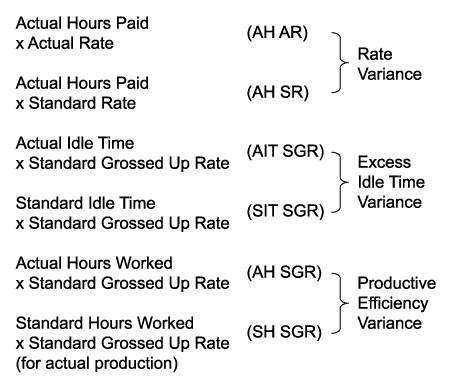
3 Controlling Idle time
Idle time can be prevented or reduced considerably by :
1. Proper maintenance of tools & machinery
2. Advanced production planning
3. Timely procurement of stores
4. Assurance of supply of power
5. Advance planning for machine utilisation

 Test your understanding 15
Test your understanding 15
ZS has a standard time of 0.5 hours per unit, at a cost of $5 perhour. It expects there to be non-productive time equal to 5% of hourspaid. The following details relate to the month of December:

Required:
Calculate the overall labour efficiency variance and analyse it between productive efficiency and excess idle time variances.


 Test your understanding 16 - Additional idle time example
Test your understanding 16 - Additional idle time example
The following data relates to T plc for the month of January:

Required:
Calculate the labour efficiency variance and analyse it between productive efficiency and idle time.

Material waste
Material waste may also be a normal part of a process and could be caused by:
- evaporation
- scrapping
- testing
Waste would affect the material usage variance. The calculation will be reviewed in the next chapter.
Standard costing and activity-based costing (ABC)
- As seen in chapter 1, ABC is a method of allocating overhead costs to products using cost drivers.
- Standard costs can be compared to actuals and an overhead expenditure and efficiency variance calculated.
Where materials are not properly controlled, excess stock of someitems are likely to occur with a result unnecessary tying up of capitaland loss through deterioration and obsolescence. Shortages of othermaterials may arise at the time when they are urgently needed, andproduction will then be delayed.
The purchasing of materials is a highly specialised function, that can control waste by :
(1) Ordering the right quantity and quality of materials at the most favourable price;
(2) Ensuring the material arrives at the right time in the production process;
(3) Take active measures against theft, deterioration, breakage and additional storage costs.
Standard costing and activity-based costing (ABC)
- As seen in chapter 1, ABC is a method of allocating overhead costs to products using cost drivers.
- Standard costs can be compared to actuals and an overhead expenditure and efficiency variance calculated.

 Illustration 3 – ABC variances
Illustration 3 – ABC variances
The following information relates to H Company's ordering activity for the period:

Required
Calculate the overhead expenditure variance and the overheadefficiency variance for the ordering activity and comment briefly on themeaning of each variance.
Solution
Variable overhead expenditure variance

Variable overhead efficiency variance

Variance = 600 F orders × standard cost of $45 per order = $27,000 F
Each unit used less than 0.2 orders, resulting in a favourable variance.


 ABC Variances - Solution
ABC Variances - Solution
Variable overhead expenditure variance

Variable overhead efficiency variance

Variance = 600 F orders × standard cost of $45 per order = $27,000 F
Each unit used less than 0.2 orders, resulting in a favourable variance.


 Test your understanding 17 - ABC variances
Test your understanding 17 - ABC variances
The following information is also available for H Company's delivery activity for the period:

Required:
Calculate the overhead expenditure variance and the overheadefficiency variance for the delivery activity and comment briefly on themeaning of each variance.

When should a variance be investigated?
Factors to consider include:
Size
A standard is an average expected cost and therefore smallvariations between the actual and the standard are bound to occur. Theseare uncontrollable variances and should not be investigated.
In addition, a business may decide to only investigate variances above a certain amount. The following techniques could be used:
- Fixed size of variance, e.g. investigate all variances over $5,000
- Fixed percentage rule, e.g. investigate all variances over 10% of the budget
- Statistical decision rule, e.g. investigate all variances of which there is a likelihood of less than 5% that it could have arisen randomly.
Favourable or adverse
Firms often treat adverse variances as more important thanfavourable and therefore any investigation may concentrate on theseadverse variances.
Cost
For investigation to be worthwhile, the cost of investigation mustbe less than the benefits of correcting the cause of the variance.
Past pattern
Variances should be monitored for a number of periods in order toidentify any trends in the variances. A firm would focus itsinvestigation on any steadily worsening trends.
The budget
The budget may be unreliable or unrealistic. Therefore, thevariances would be uncontrollable and call for a change in the budget oran improvement in the budgeting process, not an investigation of thevariance.
Reliability of figures
The system for measuring and recording the figures may beunreliable. If this is the case, the variances will be meaningless andshould not be investigated.

 Methods used when investigating variances
Methods used when investigating variances
A process has a standard time of 50 minutes. Control limits may beset as a fixed amount, a fixed percentage or using a statistical model.Assume they are set at a fixed amount 30 and 70 minutes, and actualtimes recorded as follows:
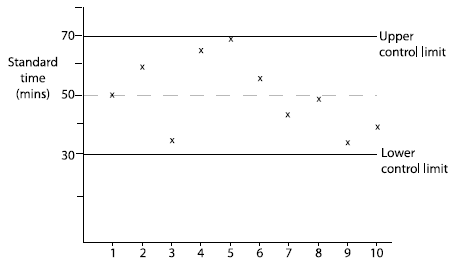
If the actual time taken falls within the bands, the variance is not significant.
Control limits should be set so that there is only a small chance of a random fluctuation falling outside them.
- In this example the control limits are set two standard deviations from the mean. This means that 95% of the recorded process times should lie within the control limits.
- The actual time is recorded on the chart after the completion of each process. It will soon be apparent if the mean time is shifting from 50 minutes, as the recorded times move outside the control limits.
- If more than 5% of the observed results do lie outside the control limits, then the system may be referred to as being statistically out of control. At this stage management must decide what further action to take.

4 Chapter summary
Test your understanding answers

 Test your understanding 1
Test your understanding 1
D
A bank and a food manufacturer would have similar repetitive outputfor which standard costs could be calculated whereas a kitchen designeris likely to work on different jobs specified by the customer.


 Test your understanding 2
Test your understanding 2
(a)
(b)


 Test your understanding 3
Test your understanding 3



 Test your understanding 4
Test your understanding 4
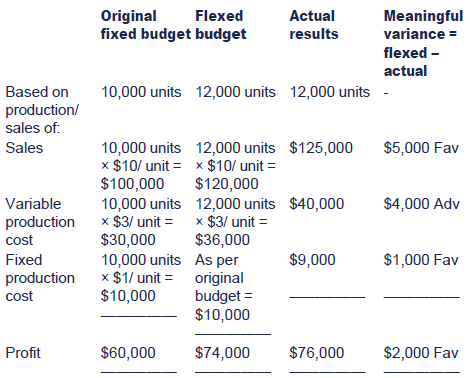


 Test your understanding 5
Test your understanding 5
The total material expenditure for the organisation will bedependent partly on the prices negotiated by the purchasing manager andpartly by the requirements and performance of the production department.If it is included as a target for performance appraisal the manager maybe tempted to purchase cheaper material which may have an adverseeffect elsewhere in the organisation.
The requirement to introduce safety measures may be imposed but themanager should be able to ensure that implementation meets budgettargets.
A notional rental cost is outside the control of the manager andshould not be included in a target for performance appraisal purposes.


 Test your understanding 6
Test your understanding 6
- The production manager will be responsible for managing direct labour and direct material usage.
- However, the manager may not be able to influence:
- the cost of the material
- the quality of the material
- the cost of labour
- the quality of labour
- Performance should be measured against the element of direct cost which the manager can control.


 Test your understanding 7 - Sales variances
Test your understanding 7 - Sales variances
| (a) |
 |
| |
 |
(b) The sales price variance is the same undermarginal costing, but the sales volume variance is calculated using thestandard contribution per unit. Here, standard contribution = $60 - ($25+$8+ $4) = $23.
Sales volume variance

Alternative calculation :

Variance = 500 A units × standard contribution of $23 per unit = $11,500 A


 Test your understanding 8 - Materials variances
Test your understanding 8 - Materials variances



 Test your understanding 9 - Labour variances
Test your understanding 9 - Labour variances
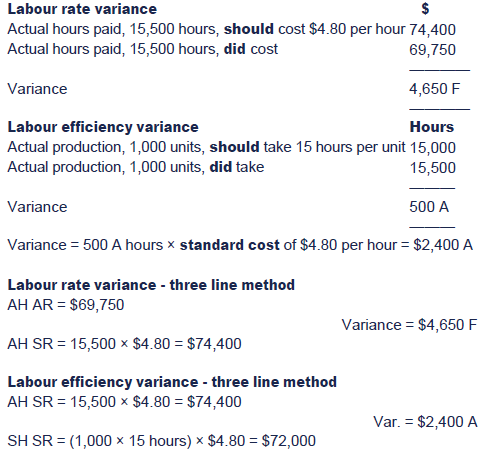


 Test your understanding 10 - Variable overhead variances
Test your understanding 10 - Variable overhead variances
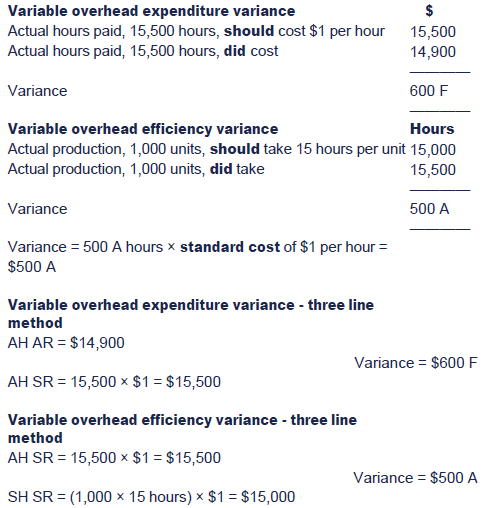


 Test your understanding 11 - Fixed overhead variances
Test your understanding 11 - Fixed overhead variances
(a) FOAR = $22,960 ÷ (6,560 units × 2 hours per unit)
| (b) |
 |
| |
 |
| (c) |
 |
| |
Variance in $ = 520A hours × standard FOAR $1.75/hr = $910 A
 |
| (d) |
 |
| |
Variance in $ = 320F hours × standard FOAR per hour $1.75 = $560 F
 |
| (e) |
 |
| |
Variance in $ = 100 A units × standard hours of 2 × standard FOAR per hour $1.75 = $350 A
 |
Note: The fixed overhead volume variance of $350A is the total of the capacity and efficiency variances ($910 A + $560 F).


 Test your understanding 12 - AC operating statement
Test your understanding 12 - AC operating statement

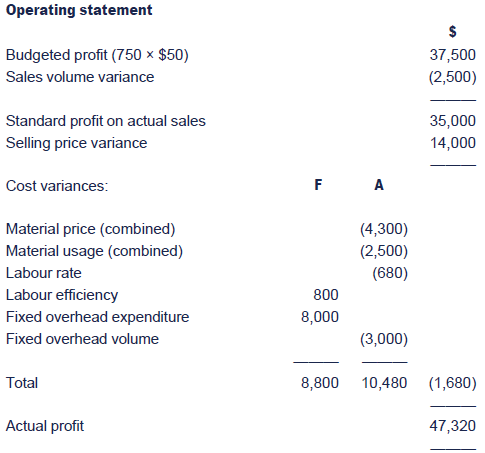


 Test your understanding 13 - MC operating statement
Test your understanding 13 - MC operating statement
Standard contribution = $6 – $4.30 = $1.70 per cylinder

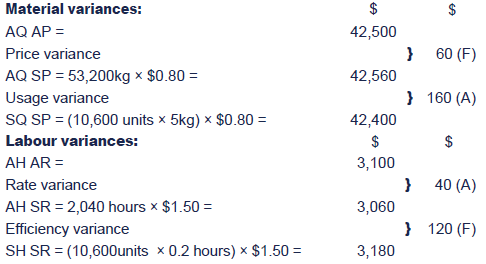
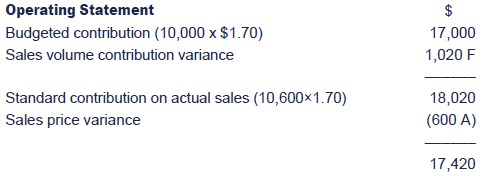
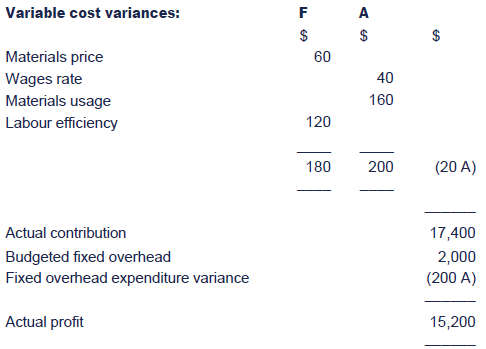


 Test your understanding 14
Test your understanding 14
(a)

(b) Standard average time per unit for the first 4 units:
y = axb
where b = log r/ log 2
= log 0.8/ log 2
= – 0.32193
y = 100 × 4 – 0.32193
= 64 hours
Standard time for the first 4 units:
64 hours × 4 units = 256 hours
Labour rate variance:
This will be unchanged since it is based on actual hours, i.e. 270 hours.
Labour efficiency variance:

- The labour efficiency variance is now $112 A
- Taking into account the learning curve effect has changed the labour efficiency variance from $1,040 F to $112 A
- This is because the actual learning rate was slower than expected
- In this type of scenario the firm could consider having different labour standards for different volumes of production.


 Test your understanding 15
Test your understanding 15
Labour efficiency variance
The expected idle time of 5% should be included in the standard time to produce 1 unit.

Variance = 158 A hours × standard cost of $5 per hour = $790 A
Labour efficiency variance - alternative method

This is the same formula that has been used previously but it is important to remember that the hours are always hours paid.
Productive efficiency variance

For each productive hour worked there will be 5% non-productivetime paid. The standard rate per hour should take this into account.
Variance = 135 A hours × (standard cost of $5 per hour × 100/95) = $711 A
Productive efficiency variance - alternative method
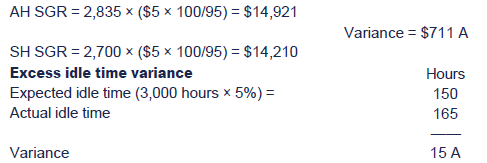
For each productive hour worked there will be 5% nonproductive timepaid. The standard rate per hour should take this into account.Variance = 15 A hours × (standard cost of $5 per hour × 100/95) = $79 A
Excess idle time variance - alternative method



 Test your understanding 16 - Additional idle time example
Test your understanding 16 - Additional idle time example
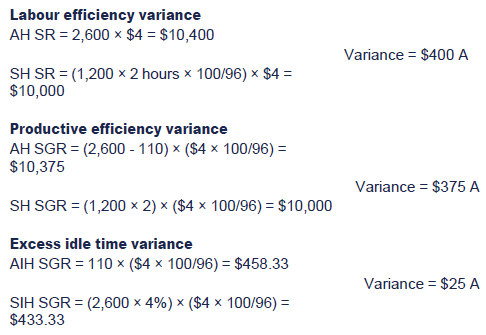


 Test your understanding 17 - ABC variances
Test your understanding 17 - ABC variances

Each delivery cost less than the standard cost of $250, resulting in a favourable variance.

Variance = 10 A deliveries × standard cost of $250 per delivery = $2,500 A
Each unit used more than 0.01 deliveries, resulting in an adverse variance.

|
Created at 5/24/2012 4:42 PM by System Account
(GMT) Greenwich Mean Time : Dublin, Edinburgh, Lisbon, London
|
Last modified at 5/25/2012 12:54 PM by System Account
(GMT) Greenwich Mean Time : Dublin, Edinburgh, Lisbon, London
|
|
|
|
 |
Rating
:
|
 Ratings & Comments
(Click the stars to rate the page) Ratings & Comments
(Click the stars to rate the page)
|
 |
Tags:
|
|